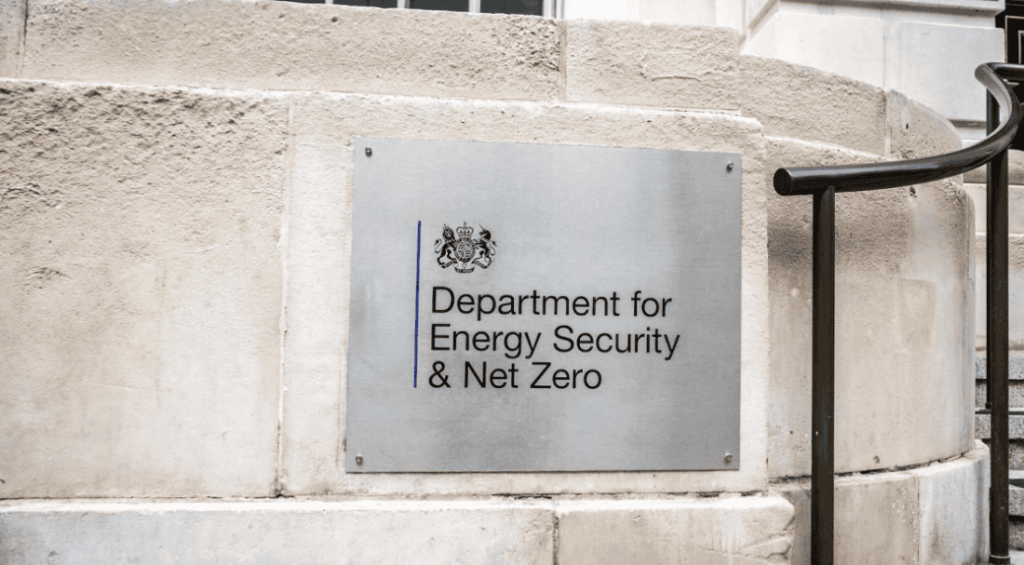In 2019, the UK government became the first major economy to pass laws with a target of net zero by 2050. The May 2024 CfM survey asked its UK panel to assess the impact of the measures taken to meet this net zero commitment on the UK’s long-term economic growth, and to choose the most effective policy to reduce CO2 emissions. Most panellists believe that green policies have not had any impact on the UK’s long-term growth prospects. The majority of the panel advocate a carbon tax as the most effective way to curb CO2 emissions in the UK.
In 2019, the UK government became the first major economy to pass laws with a target of net zero by 2050. As a part of this commitment, the UK government has set legally binding ‘carbon budgets’ which act as stepping-stones towards the 2050 target. To date, six carbon budgets, running up to 2037, have been put into law. The first two budget targets for 2008-2017 aimed to reduce emissions to 32% of 1990 levels and were successfully met. The third budget (2018-2022) aimed to reduce emissions to below 38% of 1990 levels and will be evaluated in a report by the Climate Change Committee, an independent advisory body, later this year.
The UK government’s Net Zero Strategy of 2019 gives a broad overview of its targets and commitments are as follows (Department for Energy Security and Net Zero 2021):
- The UK has committed to fully decarbonise its power system by 2035.
- By 2035, all new heating appliances installed in homes and workplaces will be low-carbon technologies, like electric heat pumps or hydrogen boilers.
- A commitment to end the sale of new petrol and diesel cars by 2035 (changed from 2030), and a commitment that all cars must be fully zero emissions capable by 2035.
- A commitment to achieve ‘Jet Zero’ by 2050 – net zero UK aviation emissions by 2050 (Department for Transport, 2022).
- A commitment to a UK-wide target of creating 30,000 hectares a year of new woodland by 2025 (Environment, Food and Rural Affairs Committee 2022).
- A commitment to double the UK’s low carbon hydrogen production capacity ambition to up to 10GW by 2030 (with at least half from electrolytic hydrogen) (Department for Business, Energy and Industrial Strategy 2022).
- A target of capturing and storing between 20 and 30 million tonnes of CO2 a year by 2030 (Department for Business and Trade n.d.).
Progress evaluations of the UK’s net zero targets have shown mixed results. In its 2023 progress evaluation report, the Climate Change Committee concluded that “emissions reductions will need to accelerate in all sectors apart from electricity supply,” with special emphasis on the need to reduce emissions in the agriculture, land use, and waste sectors (Climate Change Committee 2023). The Business, Energy and Industrial Strategy Committee of the House of Commons found that policy and regulatory barriers are impeding the government’s progress towards decarbonising the power system (Business, Energy and Industrial Strategy Committee 2022).
The Conservatives tout the UK’s progress towards net zero, it being faster than most other European countries. They therefore proposed a more gradual approach in their election manifesto, calling for “more pragmatic, proportionate, and realistic approach to meeting Net Zero that eases the burdens on working people” (Conservatives, 2023). Concretely, they would postpone the UK electric vehicle transition target date from 2030 to 2035 and scrapping of some energy efficiency regulations.
The Labour Party initially pledged in 2021 invest £28 billion a year towards the green economy transition. This year, however, the party reduced its commitment to green investment fund to £4.7 billion a year.
The May 2024 CfM-CEPR survey asked the members of its panel to analyse the effect of the UK’s net zero policies on long-term growth so far and identify the most effective policy to reduce CO2 emissions.
Question 1: Measures taken by the UK to meet its net zero commitments thus far have:


Twenty-four panel members responded to this question. The majority of the panel (60%) thinks that measures taken by the UK to meet its net zero commitments have had no effect on economic growth. A small fraction (20%) even thinks that green policies have improved long-run economic growth in the UK. Only 12% of the panel believes that these policies have harmed long-term growth.
Most panellists believe that policies implemented to achieve the UK’s target of net zero by 2050 have not hurt its long-term growth prospects. Jagjit Chadha (NIESR) suggests that despite some “short-term adjustment costs”, such policies “ought to be helpful in achieving sustainable growth in the long run.” Angus Armstrong (UCL) similarly argues that though these policies may have some “adverse consequences” on some industries, sectors and regions, “investment in new energy sources, retrofitting buildings, introducing new transport infrastructure should promote growth [in the long run].” Martin Ellison (University of Oxford) cites government investment in offshore wind energy generation as a successful example of how green policies may provide a boost to long-term economic growth in the UK. He points out that government investment in offshore wind since the 2010s has led to offshore wind accounting for “15% of the UK’s electricity generation”, leading to “productivity gains” and the “promotion of new jobs and export opportunities.”
Some panellists believe that green policies have had a significant detrimental impact on long-run growth in the UK. Michael Wickens (University of York) cites the “switching off of North Sea oil” as an example of a policy that has led to more damage than good, due to “its effect on fuel security and [reduced] tax revenues.” He further points out that the policy has resulted in onshore wind farms which are “a blight on the countryside”. Summarising his argument, he states: “As the UK contributes less than 1% of world emissions, the benefits of the former are tiny compared with the economic cost, even taking into account the benefits of green enterprises.”
Question 2: Which of following is the most effective policy to reduce UK CO2 emissions?


Twenty-four panel members responded to this question. The most common response in the panel (48%) is that a carbon tax is the most effective policy to reduce CO2 emissions in the UK. A smaller fraction (20%) thinks that industrial policy supporting green technologies is a superior solution, with remainder split between improving housing stock in the UK (18%), reinforced regulatory standards (8%) and emissions trading schemes (6%).
Almost half of the panel believes that a carbon tax would be the best solution to the UK’s CO2 emissions problem. Andrea Ferrero (University of Oxford) summarises this viewpoint: “A carbon tax is the single most effective policy to progress towards net zero because it represents the ideal way to deal with the externality caused by CO2 emissions.” A carbon tax is an example of a Pigouvian tax: a tax that tries to make firms and individuals internalise the negative harms (such as CO2 emissions) that their consumption causes to society. This solution tends to be popular among economists because economic theory shows that it can be designed to fully balance the private benefits of market transactions with the harms they cause to others. However, implementing a carbon tax in real life is difficult due to external factors, as summed up by Ricardo Reis (London School of Economics): “It [a carbon tax] is also, according to experience, sadly the least politically feasible.”
Several panel members believe implementing industrial policy that supports green technologies may be a better way of curbing CO2 emissions. Using industrial policy as a tool for achieving net zero is a recent phenomenon, with earlier uses of industrial policy restricted mainly for end-of-pipe solutions to reduce local and regional pollution (Nilsson et al. 2021). After the adoption of the Paris Agreement, several policy briefs and recommendations on low-carbon industrial development have been published by NGOs, industrial actors, and academic scholars (Nilsson et al. 2021). Juhász et al. (2023) find that the primary use of industrial policy in high-income countries is to promote clean energy generation, suggesting that the green energy transition is being more heavily promoted by industrial policy (both in levels, and in relative terms) among high-income economies. The latest development in this trend was the implementation of the Inflation Reduction Act in the US in 2022, which used a combination of grants,loans,tax provisions and other incentives to specifically target CO2 emission reductions across various stages of the supply chain and across myriad industries. Cervantes et al. (2023) argue that such science, technology and innovation (STI) policies are critical because technological progress reduces the costs of emissions reduction policies, and hence, can partially substitute for low carbon prices, which is important as these are often difficult to implement politically. Economists have suggested other measures under the industrial policy umbrella to curb CO2 emissions as well. For instance, Schoenmaker et al. (2021) argue that mandatory carbon disclosures can make an elementary but essential contribution to the global drive towards a net zero economy.
Valero and Van Reenen (2023) and Valera et al. (2023) suggest that green industrial policy may solve both the UK’s productivity puzzle and help it achieve its net zero target using its comparative advantage in the service sector and its strengths c in the innovation of key clean technologies such as offshore wind, carbon capture usage and storage (CCUS), and tidal stream. As such, a key focus during the elections will be on both parties’ proposals for green industrial policy. In its manifesto, the Labour Party outlined its plan to spend £7.3 billion on scaling priority low-carbon industries, including investments in electric vehicle battery production, decarbonising ports, green hydrogen and carbon capture.
Some panellists propose improving the UK housing stock as the best way of reducing CO2 emissions. Martin Ellison sums up this stance: “Much of UK housing is showing its age. It is poorly insulated and grossly inefficient to heat by modern standards. Improving the housing stock is an easy bang-per-buck [in terms of reducing emissions through lower heating use].”
Source : VOXeu



































































